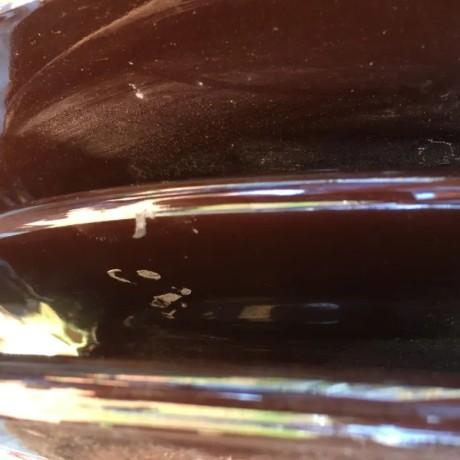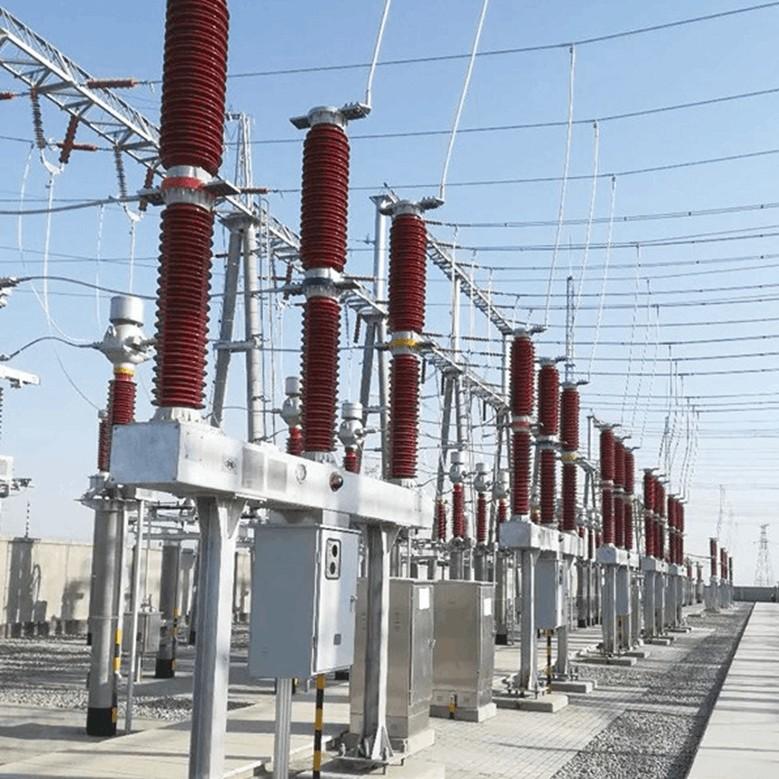Paunsa ug Paghimo sa mga Circuit Breaker
1. Mga Uri sa Circuit Breaker
1.1 Air Circuit Breaker (ACB)
Gitawag usab kini og molded frame o universal circuit breaker, ang tanang komponente niana gitapos sa usa ka insulated metal frame. Kasagaran niini open-type nga naghatag og sayon nga pagbag-o sa mga contact ug bahin, ug mahimong magamit uban sa daghang mga accessories. Ang mga ACBs kasagaran gigamit isip main power supply switches. Ang overcurrent trip units sama sa electromagnetic, electronic, ug intelligent types. Naghatag sila og upat ka yugto sa proteksyon: long-time delay, short-time delay, instantaneous, ug ground fault, ang bawg yugto sa proteksyon maadjustable sa usa ka range batasan sa frame size.
Ang mga ACBs maayo para sa AC 50Hz networks ngadto sa rated voltages sa 380V o 660V ug rated currents gikan sa 200A hangtod sa 6300A. Primarily gigamit niana para sa power distribution ug proteksyon labi sa overloads, undervoltage, short circuits, ug single-phase grounding. Naghatag niana og multiple intelligent protection functions ug selective protection. Sa normal conditions, makagamit niana para sa infrequent circuit switching. Ang mga ACBs nga rated hangtod sa 1250A makaprotektahan usab sa motors gikan sa overload ug short circuits sa 380V/50Hz systems.
Common applications include main outgoing switches on the 400V side of transformers, bus tie switches, high-capacity feeder switches, ug large motor control switches.
1.2 Molded Case Circuit Breaker (MCCB)
Gitawag usab kini og plug-in circuit breaker, ang terminals, arc extinguishers, trip units, ug operating mechanism gitapos sa usa ka plastic enclosure. Ang auxiliary contacts, undervoltage trip units, ug shunt trip units kasagaran modular, resulta sa compact design. Kasagaran wala gibaylo ang mga MCCBs ug kasagaran gigamit isip branch circuit protection.
Kasagaran ang mga MCCBs adunay thermal-magnetic trip units. Ang mas dako nga mga modelo mahimong adunay solid-state trip sensors. Ang overcurrent trip units maaari electromagnetic o electronic. Ang electromagnetic MCCBs kasagaran non-selective, offering only long-time ug instantaneous protection. Ang electronic MCCBs naghatag og upat ka yugto sa proteksyon: long-time, short-time, instantaneous, ug ground fault. Ang uban sa bag-ong mga modelo adunay zone-selective interlocking.
Commonly gigamit ang mga MCCBs para sa feeder circuit control ug proteksyon, main outgoing switches on small distribution transformers, motor control terminals, ug as power switches for various machinery.
1.3 Miniature Circuit Breaker (MCB)
Ang MCBs ang pinaka gamiton nga terminal protection devices sa building electrical systems. Nagprotekta sila sa single-phase ug three-phase circuits hangtod sa 125A labi sa short circuits, overloads, ug overvoltage. Available in 1P, 2P, 3P, ug 4P configurations.
An MCB consists of an operating mechanism, contacts, protective devices (various trip units), ug an arc extinguishing system. Contacts are closed manually or electrically and held in place by a free-tripping mechanism. The coil of the overcurrent trip unit and the heating element of the thermal trip unit are connected in series with the main circuit, while the undervoltage trip coil is connected in parallel with the power supply.
In building electrical design, MCBs are used for overload, short-circuit, overcurrent, undervoltage, ground fault, leakage protection, automatic transfer of dual power sources, ug infrequent motor starting and protection.
2. Key Technical Parameters of Circuit Breakers
Rated Operating Voltage (Ue)
The nominal voltage at which the circuit breaker is designed to operate continuously under specified conditions. In China, for systems up to 220kV, the maximum operating voltage is 1.15 times the system rated voltage; for 330kV and above, it is 1.1 times. The breaker must maintain insulation and perform switching operations at the system’s maximum operating voltage.
Rated Current (In)
The current the trip unit can carry continuously at ambient temperatures up to 40°C. For adjustable trip units, this is the maximum adjustable current. At temperatures above 40°C (up to 60°C), derating is allowed.
Overload Trip Current Setting (Ir)
The breaker trips with a time delay when current exceeds Ir, which represents the maximum current the breaker can carry without tripping. Ir must be greater than the maximum load current (Ib) but less than the cable’s permissible current (Iz). For thermal-magnetic breakers, Ir is typically adjustable from 0.7 to 1.0In; electronic trip units offer a wider range, usually 0.4 to 1.0In. For fixed trip units, Ir = In.
Short-Circuit Trip Current Setting (Im)
The threshold at which the instantaneous or short-time trip unit activates to quickly disconnect the circuit during high fault currents.
Rated Short-Time Withstand Current (Icw)
The current the breaker can withstand for a specified duration without thermal damage.
Breaking Capacity
The maximum fault current a breaker can safely interrupt, independent of its rated current. Common values include 36kA and 50kA. It is categorized into ultimate breaking capacity (Icu) and service breaking capacity (Ics).
3. General Principles for Circuit Breaker Selection
Rated operating voltage ≥ circuit rated voltage.
Rated short-circuit making/breaking capacity ≥ calculated load current.
Rated short-circuit making/breaking capacity ≥ maximum possible short-circuit current in the circuit.
Single-phase-to-ground short-circuit current at the circuit end ≥ 1.25 × instantaneous (or short-time) trip setting.
Undervoltage trip unit rated voltage = circuit rated voltage.
Shunt trip unit rated voltage = control power supply voltage.
Electric operating mechanism rated voltage = control power supply voltage.
For lighting circuits, set instantaneous electromagnetic trip current to 6 times the load current.
For single motor short-circuit protection: 1.35× motor starting current (DW series) or 1.7× (DZ series).
For multiple motors: 1.3× largest motor starting current + sum of other motors’ running currents.
As main transformer low-voltage side switch: breaking capacity > transformer’s low-voltage short-circuit current; trip rated current ≥ transformer rated current; short-circuit setting = 6–10× transformer rated current; overload setting = transformer rated current.
After preliminary selection, coordinate with upstream and downstream breakers to prevent cascading trips and minimize outage scope.
4. Selectivity of Circuit Breakers
Circuit breakers are classified as selective or non-selective. Selective breakers offer two- or three-stage protection: instantaneous and short-time for short circuits, long-time for overload. Non-selective breakers are typically instantaneous (short-circuit only) or long-time (overload only). Selectivity is achieved using short-time delay trip units with different time settings. Key considerations:
Upstream instantaneous trip setting ≥ 1.1 × maximum 3-phase short-circuit current at downstream breaker’s output.
If downstream is non-selective, upstream short-time trip setting ≥ 1.2 × downstream instantaneous trip setting to maintain selectivity.
If downstream is also selective, upstream short-time delay time ≥ downstream short-time delay time + 0.1s.
Generally, Iop.1 ≥ 1.2 × Iop.2.
5. Cascading Protection
In system design, coordination between upstream and downstream breakers ensures selectivity, speed, and sensitivity. Proper coordination allows selective fault isolation, maintaining power to healthy circuits. Cascading uses the current-limiting effect of the upstream breaker (QF1). When a short circuit occurs downstream (at QF2), QF1’s current-limiting action reduces the actual fault current, allowing QF2 to interrupt a current higher than its rated capacity. This allows use of lower-cost, lower-breaking-capacity downstream breakers. Conditions include no critical loads on adjacent circuits (since QF1 trip would blackout QF3), and proper matching of instantaneous settings. Cascading data is determined by testing and provided by manufacturers.
6. Sensitivity of Circuit Breakers
To ensure reliable operation during minimum fault conditions, sensitivity (Sp) must be ≥1.3 per GB50054-95:
Sp = Ik.min / Iop ≥ 1.3
Where Iop is the instantaneous or short-time trip setting, and Ik.min is the minimum short-circuit current at the protected line end under minimum system operation. For selective breakers with both short-time and instantaneous trips, only the short-time trip sensitivity needs verification.
7. Selection and Setting of Trip Units
(1) Instantaneous Overcurrent Trip Setting.Must exceed the circuit’s peak current (Ipk) during motor startup:
Iop(0) ≥ Krel × Ipk
(Krel = reliability factor)
(2) Short-Time Overcurrent Trip Setting and Time
Iop(s) ≥ Krel × Ipk. Time delays are typically 0.2s, 0.4s, or 0.6s, set to ensure upstream operation time exceeds downstream by one time step.
(3) Long-Time Overcurrent Trip Setting and Time
Protects against overload: Iop(l) ≥ Krel × I30 (maximum load current). Time setting must exceed allowable short-term overload duration.
(4) Coordination Between Trip Settings and Cable Capacity.To prevent cable overheating or fire without tripping:
Iop ≤ Kol × Ial
Where Ial = cable’s allowable current-carrying capacity, Kol = short-term overload factor (4.5 for instantaneous/short-time trips; 1.1 for long-time trip as short-circuit protection; 1.0 for overload protection only). If not satisfied, adjust trip setting or increase cable size.





















